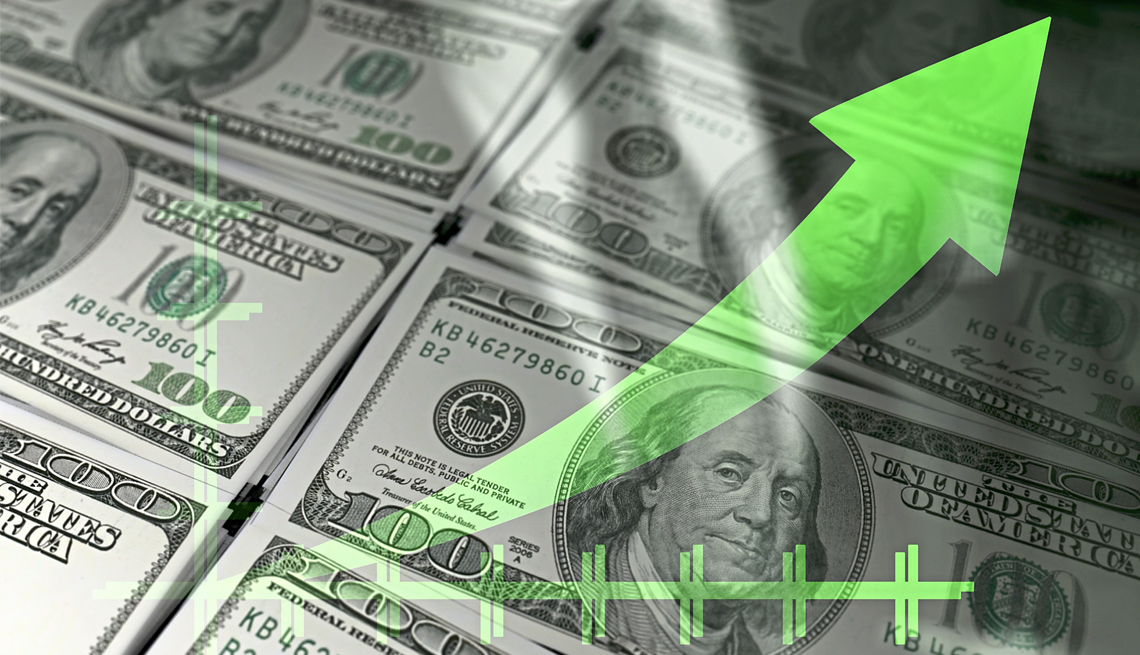
Your Inflation Cheat Sheet
- Select a language for the TTS:
- UK English Female
- UK English Male
- US English Female
- US English Male
- Australian Female
- Australian Male
- Language selected: (auto detect) - EN
Play all audios:

Retirees are somewhat insulated because Social Security payments are indexed to inflation. But because adjustments are made annually, there has been a lag as prices head higher. The 5.9
percent increase that showed up in the January Social Security checks was based on inflation figures from last year’s third quarter. Current estimates for the 2023 adjustment range from 8
percent to 11 percent. Homeowners also are generally better off than renters. During the height of the pandemic, many landlords couldn’t evict tenants or raise rents. That has changed. A
recent report by real estate brokerage Redfin showed that in July the average asking rent was up 14 percent over last year, with rents in 10 cities — including Nashville, Seattle and San
Antonio — rising more than 20 percent year over year. But if you own a home, your monthly cost goes up only if you have an adjustable rate mortgage; otherwise, it holds steady. WHAT CAN BE
DONE, AND WHO CAN DO IT? In the U.S., the Federal Reserve, the government’s central bank, is charged with managing inflation, Wessel explains. The tool it’s been using is a traditional one:
setting policies that cause banks to raise the rates they charge one another for short-term loans. That, in turn, leads banks to hike the interest rates they charge the people and businesses
seeking loans. Those higher rates discourage potential customers from borrowing money to make investments or purchases, and that lowers demand for goods or services. That slowdown in
economic activity should eventually rein in price increases. But there’s a limit to this strategy: The Fed’s rate hikes primarily affect economic sectors sensitive to interest rates, such as
real estate and manufacturing. It can’t do much about either food or energy prices, which tend to go up and down very quickly. Congress and the president have limited options, not all of
them pleasant. One is to raise taxes in order to lower demand. The Inflation Reduction Act passed in August raises taxes on some corporations and increases the IRS’s budget, but those moves
are unlikely to have an impact. Some other possible steps, such as releasing oil from the U.S. strategic petroleum reserve, have already been taken. Other factors influencing inflation are
beyond U.S. control. “This is a global situation,” Schwab’s Martin says. “Washington can’t stop China from locking down their regional economies.” And it has limited ability to rein in food
inflation, which has been worsened by the war in Ukraine and extreme weather. HOW IS TODAY’S INFLATION DIFFERENT FROM INFLATION IN THE 1970S AND 1980S? As painful as today’s price increases
may be, they’re nowhere near as bad as they were back then — so far. Inflation hit a high of 14.6 percent in 1980, and some mortgage rates topped 18 percent a year later. But savings
instruments also paid higher interest, with a three-month CD yielding 18.3 percent in 1981. Some of the big inflation drivers of yesteryear have also waned. Back then, a greater percentage
of workers were unionized and had contracts with built-in cost-of-living adjustments that automatically raised wages as prices increased, causing a back-and-forth inflation spiral. Today,
only 6 percent of private-sector workers are union members. While supply chain issues have been a big factor in today’s inflation, global competition is still much higher than in the 1970s
and 1980s, and it remains a force in keeping prices down. Finally, availability of alternate energy resources is limiting the impact of oil shortages. “Fifty years ago, the average family
spent 8 or 9 percent of its budget on energy,” Ritholtz says. “Today it is more like 3 or 4 percent.”
